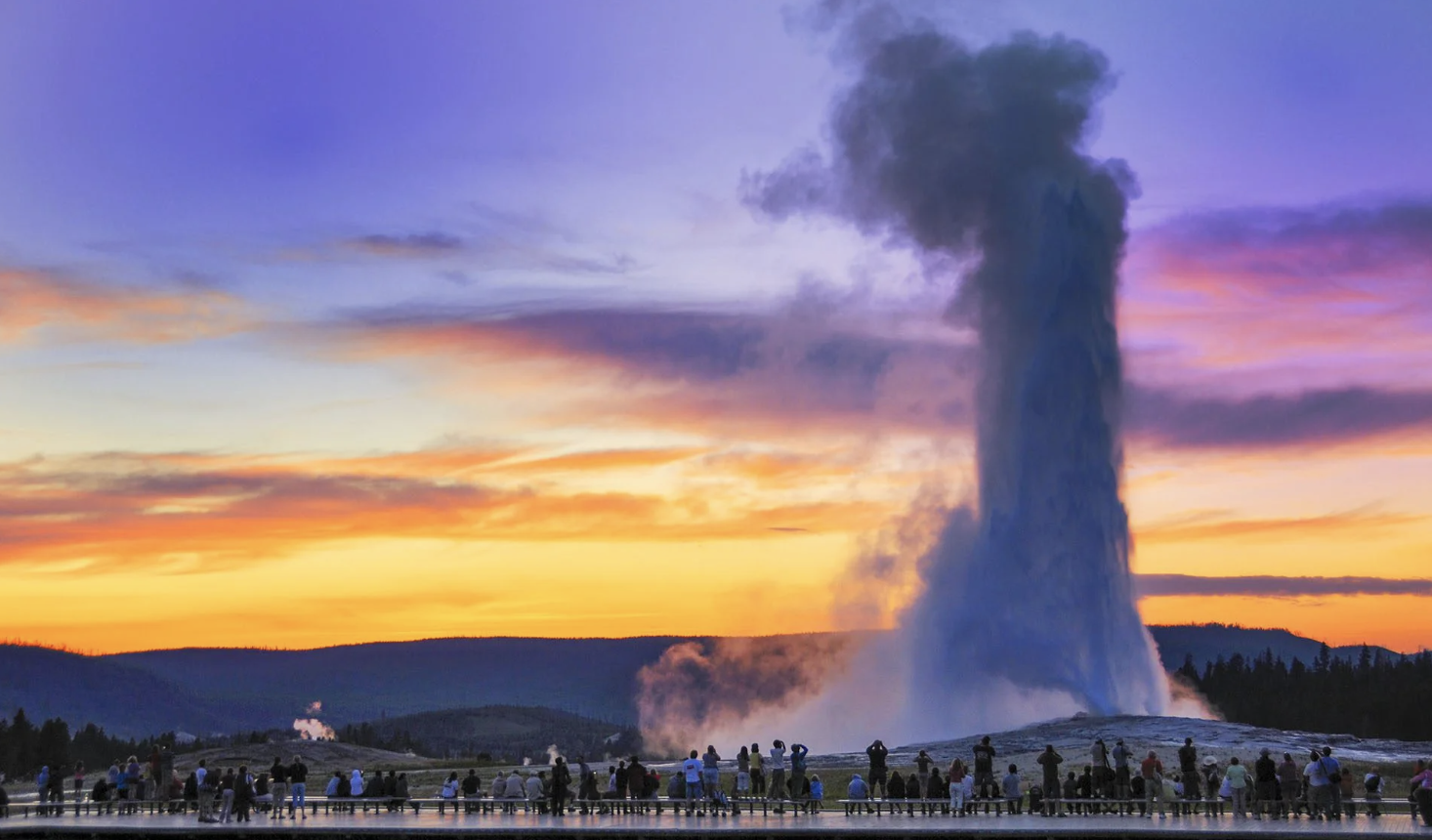Pause and pondr
WHY IS THERE A DIVERSITY GAP IN OUTDOOR SPACES?
Nature should be a great equalizer for people, but research shows that AAPI, Black and other People of Color are far less likely to engage in nature-based outdoor recreation activities. Historic discrimination is an underlying factor. Meet people who are making space for everyone to enjoy nature.
DID YOU KNOW?
Black Americans represented 12.4% of the U.S. populace ages 6 and over in 2019, but only 9.4% of outdoor participants. Source: Outdoor Industry Association 2020 report
WHAT YOU’LL LEARN
How historical forces have shaped people of color’s access to outdoor spaces
Some current efforts to affirm the presence people of color in the outdoors
Why is outdoor access for people of color an issue?
In 2020, avid birder Christian Cooper was exploring Central Park in New York, when he came across Amy Cooper, whose dog was not on a leash, as park rules require. He asked her to leash her dog, when she began to berate him, threatening to call the police. Christian is Black and Amy is white and the interaction quickly spread across both news and social media, leading to a greater conversation about race and the outdoors, as did the murder of Ahmaud Arbery, who was out jogging in a Georgia neighborhood.
Taking a walk in a park with friends or family, jogging, going for a hike — or birdwatching like Cooper was — are experiences that many consider part of their everyday lives. However, for marginalized communities, accessibility to the outdoors can be limited. Some of the barriers include actively hostile environments, lack of exposure, and infrastructure that excludes certain populations.
What have been historic barriers for people of color in the outdoors?
According to the National Health Foundation, nearly 70% of people who visit national forests, national wildlife refuges, and national parks are white, while the remaining population identifies as people of color. The costs of camping gear, entrance fees, lack of vacation days, and unpaid leave are some of the prohibitive reasons.
But the larger reason for the gap is systemic. “A combination of economic inequality, legalized segregation, and other forms of historical and present-day overt/covert racial violence has perpetuated a diversity gap in the outdoors,” the foundation stated in a recent article.
Lydia Parker, co-founder and executive director of Hunters of Color, is from the Kanien’kehá:ka, more commonly known as Mohawk. She understands firsthand the legacy of colonialism on her people and other Indigenous communities, and how it connects with access to outdoor spaces.
“Indigenous people were removed from sacred land and hunting land where you’re part of the community of nature,” she said, adding that they were forced into reservations, which are so often barren.
Hunting practices were also limited for enslaved people. After emancipation, Black people were forced into city ghettos via racial redlining, effectively cutting many off from communing with the outdoors. Jim Crow laws further disenfranchised Black Americans, making it extremely difficult to own or cultivate land. And prior to the Civil Rights Act, Black Americans were banned from or segregated at national and state parks.
Additional safety issues around traveling led to a guide being published — starting in the 1930s — to help shield African American motorists from discrimination and racism by offering guidance on safe spaces to lodge and eat.
Who are the change-makers looking to boost outdoor equity?
Organizations like Hunters of Color have stepped up to the challenge of both deconstructing these historical inequities and creating new, more welcoming spaces for marginalized communities.
Tykee James, government affairs coordinator for the National Audubon Society, wants everyone to have the freedom to enjoy the outdoors.
James, who co-organized the first official Black Birders Week in 2020, believes that inclusion should be focused on those it affects the most. Creating jobs within the conservation and outdoor recreational field with the specific goal of diversity in mind will lead to more understanding of the barriers facing marginalized groups — and new ways to dismantle them, he says.
“I believe equitable access looks like jobs on all levels, not just the grassroots or entry-level, but on leadership, board of directors, and political levels,” James said. “There are auxiliary efforts to try to show that the outdoors are not just for white people.”
He is also the co-founder of Freedom Birders, which seeks to advance racial justice by decolonizing the future of birding. The group’s core principles are focused on the acronym BIRD: beginner minded; inclusive and intersectional; reflecting and recognizing; and deliberate.
“If you take those principles in what you do when you’re outside it will create a better community of birders,” said James. “It will create an avenue for more folks who operate in the justice space who haven’t had the opportunity to pick up a pair of binoculars and connect birds with the movement of people and the recognition of land.”
For Hunters of Color, the centering of people of color and their experiences means creating comfortable environments for newcomers and veteran hunters alike. The group’s initiatives include anti-racism training for all members, connecting urban-based communities of color with rural communities, and hosting conservation, weapon safety courses (participants are never required to work with firearms), and other educational events.
Pondr This
What kind of outdoor activities do you enjoy and take pleasure in?
Have you ever thought about outdoor equity?
Growing up, were you exposed to diverse groups of communities while engaging in outdoor activities?
Questions for leaders:
What are spaces in your workplace that would allow for full expression of your employees' interests?
What spaces in your workplace feel safe and inclusive for all employees?
How would you change spaces in your workplace to bolster safety and belonging?
Explore The Stories
Diversifying the great outdoors: A toolkit
Choosing the path of adventure and exploration
Why representation matters in outdoor spaces
Black to nature: Various groups reclaim the outdoors
Topic Review
Summary: We look at reasons why outdoor recreation has suffered from a diversity gap and the people looking to increase participation and access for people of color in the great outdoors.
Continue Your Journey
There are many ways that you can increase your understanding about outdoor equity. The volunteer-led organization New York-New Jersey Trail Conference has a list of various organizations working for greater inclusion within outdoors space.
You can support affinity groups like Hunters of Color and Freedom Birders in the form of donations or spreading the word to other outdoor enthusiasts.
Additionally, advocating for Indigenous-led conservation efforts and land donations to Indigenous nations through public policy can help. Educating yourself about ethical hunting, consumption, and nature conservation from diverse sources provides a holistic perspective on nature and our relationship to it.
Reaching out to communities outside of your own with the intention to learn and build connections can both help to heal historical wounds and enrich personal relationships.
“The closer you get to something, the more you’re going to care about it and the less difference you’ll see between yourself and other people,” says Lydia Parker, co-founder and executive director of the organization Hunters of Color.
Other resources
“Braiding Sweetgrass: Indigenous Wisdom, Scientific Knowledge, and the Teachings of Plants” by Robin Wall Kimmerer
“As Long As Grass Grows: The Indigenous Fight for Environmental Justice, From Colonization to Standing Rock” by Dina Gilio-Whitaker
“Indigenous Peoples, National Parks, and Protected Areas: A New Paradigm Linking Conservation, Culture, and Rights” by Stan Stevens
Black Faces, White Spaces: Reimagining the Relationship of African Americans to the Great Outdoors by Carolyn Finney







